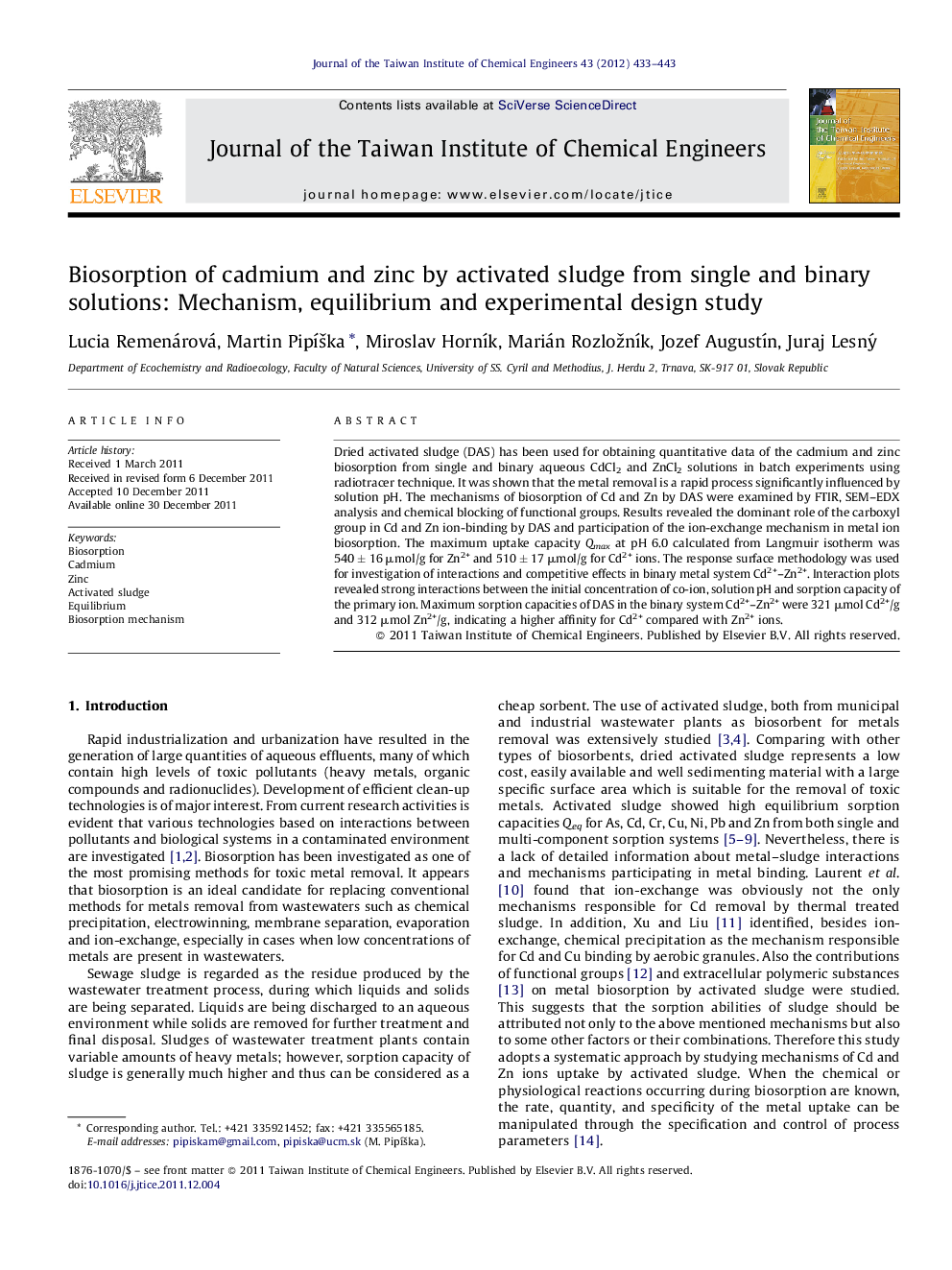| کد مقاله | کد نشریه | سال انتشار | مقاله انگلیسی | نسخه تمام متن |
|---|---|---|---|---|
| 691453 | 1460444 | 2012 | 11 صفحه PDF | دانلود رایگان |

Dried activated sludge (DAS) has been used for obtaining quantitative data of the cadmium and zinc biosorption from single and binary aqueous CdCl2 and ZnCl2 solutions in batch experiments using radiotracer technique. It was shown that the metal removal is a rapid process significantly influenced by solution pH. The mechanisms of biosorption of Cd and Zn by DAS were examined by FTIR, SEM–EDX analysis and chemical blocking of functional groups. Results revealed the dominant role of the carboxyl group in Cd and Zn ion-binding by DAS and participation of the ion-exchange mechanism in metal ion biosorption. The maximum uptake capacity Qmax at pH 6.0 calculated from Langmuir isotherm was 540 ± 16 μmol/g for Zn2+ and 510 ± 17 μmol/g for Cd2+ ions. The response surface methodology was used for investigation of interactions and competitive effects in binary metal system Cd2+–Zn2+. Interaction plots revealed strong interactions between the initial concentration of co-ion, solution pH and sorption capacity of the primary ion. Maximum sorption capacities of DAS in the binary system Cd2+–Zn2+ were 321 μmol Cd2+/g and 312 μmol Zn2+/g, indicating a higher affinity for Cd2+ compared with Zn2+ ions.
► SEM–EDX confirmed that ion exchange participates in Cd and Zn sorption by DAS.
► In this work the adequacy of the isotherm models was compared by using AIC.
► DAS has higher affinity toward Cd in comparison with Zn in binary system.
► RSM revealed existence of interactions and competitive effects between variables.
Journal: Journal of the Taiwan Institute of Chemical Engineers - Volume 43, Issue 3, May 2012, Pages 433–443